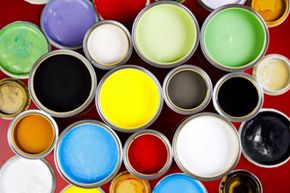Key Takeaways
- VOCs (volatile organic compounds) are hazardous chemicals in many house paints. They release gases during and after the painting process, which can cause health issues such as dizziness and headaches.
- The concentration of VOCs indoors can be up to 1,000 times higher than outdoors during painting activities, but you can mitigate this by using low-VOC or no-VOC paints and ensuring good ventilation.
- Proper ventilation and the choice of paint significantly influence how long VOCs remain in the air, with some new buildings remaining "toxic" for months due to multiple sources of VOCs.
The word organic is usually a positive term to see on a product label. But in the case of volatile organic compounds (VOCs), you don't want any part of it if you're trying to lead a greener life. These chemical compounds are in a variety of products that you may be using around your house, and exposure to them can be unhealthy for children, the elderly and people with compromised immune systems. They're not great for healthy adults, either.
House paint is a common place you'll find some of the volatile organic compounds, and lucky for you, they're also one of the easier ones to avoid. All you need to do is ask your local paint store to point out the low-VOC paint and then check out the labels.
Advertisement
In house paint, VOCs are released into the air once the paint is on the walls, during the drying process. Once these gases are in the air you're breathing, they could lead to dizziness or a bad headache. How many VOCs enter the air depends on what kind of paint you have. Normal indoor VOC levels usually stand at about 50 percent more than outdoor air. But while you're painting or stripping paint, these levels can rise to as much as 500 to 1,000 times as the level of the cleaner outdoor air.
As for how these VOCs stay in the air, it depends on how well you ventilate the area during and after painting, as well as how many VOCs were in the paint you were using. They decrease slowly over time, but a fan and some open windows will go a long way in helping to rid the air of the unhealthy fumes. Experts won't go on record with across-the-board statements for how long this can take, but brand new homes that have a multitude of materials and products that emit VOCs have been known to remain "toxic" for many months after construction is completed.
If you're just painting a single room in your home, keep it well ventilated while you paint, and the room should be OK after a day or so. Avoid sleeping in rooms where you have painted recently, or better yet, just buy low- or no-VOC paint to begin with so you don't have to worry.
Advertisement

